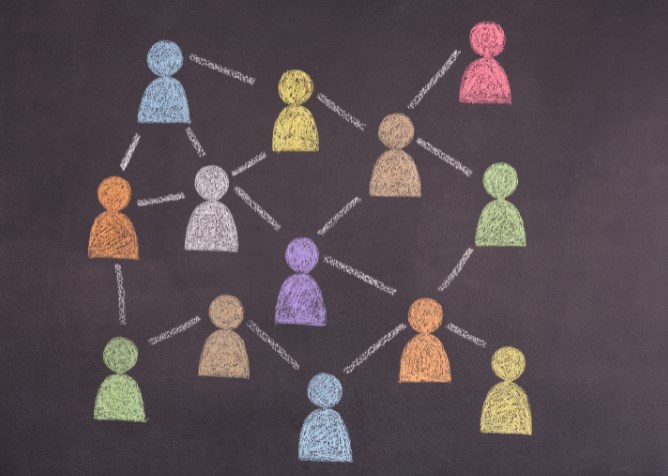📊 Sampling methods
Researchers in their studies often use different sampling methods, so as not to have to investigate an entire population in order to collect analyzable perceptions. In this article we will learn to know the characteristics of these sampling methods, to be able to decide which is the best when carrying out a research project and in the most successful way.
What is sampling?
It is the technique to select individual members or a subset of the population, in order to make statistical inferences in only a part of it, without having to study the entire population. The sampling method is the fundamental basis of any research design and also saves not only time but also costs. On the other hand, survey software with appropriate sampling techniques can be used to obtain optimal research.

Let’s suppose that a drug manufacturer wants to investigate the unfavorable side effects of a certain drug on the entire population of a country and for obvious reasons, it is practically impossible to carry out research in which all citizens of that country participate. That is why the researcher must choose a sample of people for each demographic group, in order to obtain feedback regarding the behavior of the drug and its side effects in the population.

Sampling methods
There are two types of sampling methods that are: Probabilistic and non-probability sampling.
Probability sampling: This is a sampling technique where the researcher determines a classification with few criteria and randomly chooses individuals or a sample from a population. It is important to emphasize that all individuals will have the same opportunity to make up the sample through this selection parameter.
Non-probabilistic sampling: In this sampling technique, the researcher simply randomly chooses the individuals in the research, in this case there is no predefined selection process and that is why it is more difficult for individuals to have the same probabilities of be part of the show.
Examples of sampling methods
We are going to know the different types of sampling, both probabilistic and non-probabilistic, that can be applied in a research study.
In probability sampling technique, researchers choose samples from the largest population and use probability theory. In this sampling method, all individuals in the population are considered and the samples based on a fixed process are formed.
Suppose we have a population of 2000 members, each individual will have a probability of 1/2000 of being chosen to be part of a sample. In probability sampling, bias is eliminated in a population and all individuals are given a fair chance when it comes to being included in the sample.
In probability sampling, four different types of techniques can be named:
1.- The simple random sampling technique: This is one of the best techniques as far as probability sampling is concerned and also a lot of time and resources can be saved with this method. On the other hand, it is a reliable method to obtain information and each one of the individuals of a population is chosen completely at random. This implies that each individual has the same probability of being chosen, when forming part of a sample.
For example, suppose we have a company with 500 employees and that its human resources department requires teaming up for a certain activity. For this, human resources members prefer to choose the individuals whose names are in a bowl and that is why each of the employees will have the same opportunity to be chosen.
2.- Cluster sampling technique: This method is also called cluster sampling and is a technique in which researchers divide the population into clusters or sections and which in turn represent the population. A sample is included in each of the groups based on demographic parameters such as location, gender, age, etc. In this way, it is easier for the researcher to create a survey to obtain an effective inference, based on the feedback.

For example, suppose the United States government requires an assessment of the number of immigrants living within its country. One proposal will be to divide them in terms of the number of immigrants by states, let’s say those from Florida, California, Texas, Hawaii, etc. This is how a more effective survey is carried out, since the results will be organized by state and in this way, the immigration data will be obtained in an objective way.

3.- Systematic sampling technique: Systematic sampling is a method used by researchers to choose individuals from a certain population at regular intervals.
To apply the method it will be necessary to choose a starting point for the selection of the sample and a size that can be repeated at regular intervals. This type of method has a defined scope and that is why this technique is the one that can be performed in a shorter period of time.
For example, suppose that a certain researcher wants to systematically collect a sample of 500 people and a population of 5000 people. For this, it is necessary to list each individual in the population between the numbers 1 and 5000, but only one individual in 10 will be chosen to make up the sample, that is, the total size of the population must be divided by the size of the sample. = 5000/500 = 10.
4.- Stratified sampling technique: In this stratified random sampling technique, the researcher must divide the population into smaller subgroups, but that yes, they do not overlap but rather represent the entire population. During sampling, the groups should be organized and then a sample is drawn from each of them separately.
For example, suppose that a researcher wants to analyze people according to their annual income and to do this, he will create groups or strata according to their annual family income. A first stratum can be less than $ 20,000, to later generate a second stratum that ranges between $ 21,000 and $ 30,000, a third stratum that ranges from $ 31,000 to $ 40,000 and another group that ranges from $ 41,000 to $ 50,000, etc.
In this way, the researcher includes the characteristics of individuals belonging to different income groups. This is how traders can study which income group to target and, on the other hand, which of these groups does not suit them when it comes to obtaining their desired results.
Different utilities of probability sampling
Sample bias is reduced: Through probability sampling methods, the bias derived from the population sample is nonexistent or negligible. Probability sampling allows us to gather data that have a higher quality, since the sample represents the population in an adequate way.
Diverse population: When the population is diverse and extensive, it is necessary to have an appropriate representation so that the data does not derive from a single demographic group.
Generate an accurate sample: Probability sampling is very useful for researchers, as it helps them plan and create an accurate sample and in this way, be able to obtain well-defined data.
Different types of non-probability sampling
The non-probabilistic method is based on a collection of information that in turn is based on the selection of samples by an investigator and not precisely, on a fixed selection process.
In a large part of the cases, the result of a survey that is carried out through a non-probabilistic sample generates biased results and this ultimately does not help in the objective representation of the population. But there are circumstances such as the preliminary stages of a study or perhaps certain cost limitations when conducting the research, where non-probability sampling will be a more useful response than using another type of sampling.
Non-probability sampling types
1.- Convenience sampling: This technique will depend on the easy access that individuals have, such as a survey conducted with customers in a certain shopping center or perhaps passers-by who are on the road of a certain street. crowded.
It is called convenience sampling, thanks to the ease with which the researcher can carry it out and his ability to get in touch with individuals. In this case, the researcher does not have sufficient authority to be able to select the elements of the sample and the survey is carried out based on proximity and not precisely on representativeness.
In general, this type of method is used when there are cost or time limitations in collecting the information. There are circumstances in which there are limitations with respect to resources, such as in the initial stages of an investigation and that is where convenience sampling is used.
For example, Non-Governmental Organizations generally use convenience sampling a lot in shopping malls to distribute flyers for upcoming events or promote some cause, and to that end, they distribute their flyers at random.
The researcher chooses the individuals in the sample solely because of their proximity and not precisely because they are part of a representative sample of the entire population.
This type of sampling is used when it is not necessary to consider that a person is part of the sample, that is, each individual can participate and is eligible as part of the sample. For example, many times we find situations in a school where the teacher chooses the first two rows to participate in a competition, this is the typical example in terms of proximity.
This technique is widely used by companies to collect information on some critical problems that must be faced almost immediately or perhaps, when a brand is gathering information regarding a product that has just been launched on the market. It is also widely used by researchers in the early stages of a study, as it is a very easy and fast method when it comes to obtaining results.
An example of convenience sampling is when a marketing student must complete a task to obtain feedback regarding the scope of marketing in the year 2018. The student will most likely plan an online survey and send it to all of their contacts by phone or through their social networks, in addition to asking their closest colleagues to help them answer the survey, since it requires it to complete their task.

2.- Deliberate, judgmental or critical sampling technique: The deliberate sampling method is at the discretion of the researcher, since only the purpose of the study and the objective understanding of the public are considered.
For example, suppose that a researcher needs to understand the thought process of those who are interested in studying for a master’s degree. The selection criteria will be: Would you be interested in studying your master’s degree in …? And those people who answer “No” will be excluded from the sample.
When we refer to the selection process through deliberate sampling or by judgment, this implies that the researcher carefully selects each individual when forming part of the sample. In the sampling process, the knowledge of the researcher is essential, since the members that make up the sample are not chosen at random.
When is deliberate, judgmental or critical sampling conducive?
This sampling model is much more efficient, in those circumstances in which there are only a limited number of people who possess certain qualities that the researcher expects from the population. It is usually used when the researcher prefers to apply deliberate sampling, because he feels that other sampling techniques may consume more time and also trusts his prior knowledge when selecting a sample in order to carry out the research.
This kind of sampling is generally used in situations such as that the population of interest is made up of individuals with a high degree of intellectuality, who, as we know, cannot be chosen using some type of sampling, whether it is probabilistic or non-probabilistic. It can also be used in those circumstances where the sample needs to be filtered or approved by other sampling methods.

Suppose that a researcher first performs a convenience sampling, to collect feedback data from the professors of a certain university, but finds that there are high probabilities that the results will be biased, that is when the researchers prefer to use sampling deliberate, judgmental or critical, to specifically select those professors capable of providing 100% feedback regarding the University.
Properly selecting each individual that will make up the sample is a challenge for the researcher. On the other hand, it is a very tedious task to manually select the individuals from a sample, to then ensure that there are no biases in it.
In the selection process, the intervening authority does not have to be an expert in the matter, but it must meet certain characteristics expected from an authority in this type of sampling. The authorities in charge of this process do not necessarily need to have any work experience or training in this regard.
This type of sampling is usually used when there are time limitations when creating the sample and also, the authorities in the process prefer to rely on their knowledge and not precisely on other sampling techniques.
However, it must be taken into account that the researcher may or may not be competent in carrying out an efficient sampling process. So each researcher must take responsibility for using experts when creating the sample or be very confident of their skills and understanding of the topic.
3.- Snowball sampling method: This method is the most used by researchers when individuals are difficult to track.
For example, suppose a researcher wants to survey illegal immigrants or people without shelter. In these cases, researchers use snowball theory to track down a few categories and thus be able to interview their individuals of interest to obtain results.
This sampling method is also applied in those circumstances where the subject is quite sensitive and many people do not like to discuss it openly, for example, when it is necessary to collect information on AIDS and HIV. Many victims will not answer the required questions so easily. However, the investigator can make contact with those people who know people with this disease or perhaps some volunteers related to the cause, in order to find the victims and be able to gather information.
To perform a snowball sampling you must perform two steps:
1.- The first is to identify the potential subjects that the population has and, in general, only one or a couple of individuals can be found initially.
2.- A good strategy may consist of asking those few individuals to recruit or get other people. But yes, it must be made very clear to the participants that they do not have to provide a name, if they do not want to. In short, this type of sampling method is based on the references of the initially found subjects and in this way, additional subjects are generated, it is precisely from this fact that the name “snowball” is derived. A chain referral is the way to recruit group members and this step is repeated until the required sample size is obtained. For ethical reasons, research participants should not be asked to identify other potential participants. But they can encourage others to participate.

When can snowball sampling technique be useful?
Some individuals may not want to be found, suppose a researcher were doing a study regarding shoplifting, drug use, cheating on exams or any other socially unacceptable behavior, this directly implies that potential participants should be cautious when answering any survey. But it is likely that some research participant knows other people who are in the same situation as them and can help inform their acquaintances about the benefits of the research, in addition to ensuring absolute confidentiality.

4.- Quota sampling technique: In this sampling technique, in order to select individuals, a pre-established rule is needed. Given that the sample is generated on some specific attributes, the generated sample will have the same qualities as the general population and it is a very fast method to collect them.
The researcher makes up a sample made up of individuals who are chosen for their traits or qualities and who represent the entire population. The trait can be defined to make the selection of the subset of the entire sample and that thus the data collection is really effective, in addition to being able to generalize to the population.
For the creation of precise strata, the researcher must take into account two main points:
1.- Understand all elements of the population
2.- A true intention to investigate
For example, suppose that a certain researcher performs a quota sampling and to do this he divides the population by sex, age, state, etc. It is essential to take into account the strata or proportions of each group. If the population has 60% men and 40% women, the quota sampling must also include this same proportion, to avoid biasing the results obtained.

Steps to carry out quota sampling:
1.- The population must be divided into subgroups where the characteristics of each subgroup must be part of this subgroup only. Suppose a researcher wants to study the market for a variant of Bluetooth hearing aids, the best thing to do is to target a niche based on age and evaluate the proportion that exists in the population of each of the subgroups, in order to maintain the same percentage in the selected sample.

Suppose that 58% of the individuals interested in buying their headphones have an age ranging between 25 and 35 years, the subgroups must have the same percentages with respect to age, which they have in the total population. It is also necessary to maintain the proportion of the population, that is, if the population has 500 people, the researcher can choose a sample of 50 individuals.
A sample chosen following the steps above should represent the population of interest.
Uses and utilities of sampling or non-probability
1.- Create a hypothesis: Researchers usually use non-probabilistic sampling methods, in order to create a hypothesis at times when they do not have prior information. This method not only builds a whole base for future research, but it also returns the data immediately.
2.- Exploratory research: This sampling technique is widely used by researchers in those cases where qualitative studies, exploratory research or pilot studies are carried out.
3.- Time and budget limitations: These techniques are usually used when there is some kind of limitation in the budget or time and it is then necessary to collect some preliminary data. Since the survey design is not exactly rigid, it becomes much easier to pick respondents at random and take the questionnaire.
What sampling method should be used?
In order to meet the objectives of the investigation, it is completely necessary to choose the best sampling method for that specific case and the efficiency of the sampling will depend on several factors, below we will present the steps that expert researchers usually use to decide the suitable sampling method.
1.- It is important to specify the objectives of the research, but also the required accuracy combined with the cost of the study must be taken into account.
2.- It must be identified which sampling techniques are potentially effective to achieve the proposed objectives.
3.- Put sampling techniques to the test and evaluate whether they can achieve the objective of the investigation.
4.- Once the previous steps are carried out, the best method for the investigation can be selected.
Sampling errors to avoid
Surveys to research customers and obtain knowledge about the market must be designed with great precision in order to collect data and preferences from the audience in a reliable way. That is why it is absolutely necessary to avoid sampling errors so that the data collected is of quality and offers a true analysis, in this way you can obtain the necessary knowledge to grow the business.
According to the quality of the information, the success or failure of a product can be determined, it is also necessary to have knowledge regarding market research. Suppose that the selected sample does not coincide with the research criteria, this implies that when analyzing the survey, inaccurate results can be reached and the decisions that are to be made around these results may affect in a way negative the success and growth of any business.
The main risks of making a sampling error
When taking a research sample, the following errors may be incurred:
1.- Do not take into account an important audience: It is important to take into account that the audience is not only made up of people who buy products, they are also those who make donations to some cause, enroll in schools or institutes, etc. It is essential to identify the interested party, in order to achieve the business goals.
By losing the key audience, useful responses provided by surveys can be wasted, which in turn can have a great impact to increase sales. On the other hand, the appropriate audience is likely to be a subset of a larger group.
2.- The most relevant audience is often not prioritized: The audience of an organization is considered as employees, shareholders, clients, business partners, etc. But, many times they are not equally important at all times, so it is relevant to avoid this sampling error since they cannot be counted on for all the products of an investigation. There is a risk that when you consider everyone, you end up not bringing a real benefit to anyone. So by ignoring what is important or accurate to the target audience the product is targeting, organizations may not be able to tailor their products or design marketing strategies to the existing needs of their audience.
3.- Survey bias: Each research study carries certain biases in its surveys. A researcher may make a sampling error and come to think that they have succeeded in creating an online survey, with the aim of attracting people of all ethnic origins. However, there is a possibility that the survey questions favor a certain ethnic group and instead offend the other groups. That is why the style of the survey must be designed to be acceptable to all audiences from which the information is intended to be obtained. Otherwise, the answers collected will be completely biased and therefore, the objective of the investigation will not be achieved.
4.- The survey lacks a response from the respondents: The subject of market research is closely related to the way in which the survey is provided to the population and for this it is necessary to address the specific population, this therefore it can become a problem. Since it is possible to design a survey whose respondents do not want to answer and that is ultimately a sampling error, it is also wasted a lot of time trying to find out why respondents hesitate to participate and it takes too much effort or alternative incentives, to achieve attract respondents. Reasons why designing an ideal survey eliminates the risk in the absence of a response.
5.- Limited time: When time is lacking, it is practically impossible to carry out a survey without the use of a sample. Thus, the design of an accurate survey is completely necessary, as this allows researchers to reach conclusions with greater precision and in a much shorter time.
It is no secret to anyone that time is of the essence for market research and decision making. As the market changes in a customary way, sampling must be done with great precision, otherwise the researcher will require much more time to collect and select the responses of his respondents.
Let us suppose that the researcher spends too much time collecting the information, to later collect it again after rectifying the sample, while all this is happening, market conditions may change and the decision may be taken too late, thus losing no only time, but money.
5.- Budget: The design of a survey from its inception to decision-making generates a certain investment expense and this will depend only on the size and type of the research activity.
Some researchers decide that it is best to purchase samples from some vendors, but it is also important to choose the correct sample for the first attempt, as this avoids conducting a second investigation and having to spend more money.
6.- Precision in the data: The precision of the data is possibly one of the most important factors to carry out any investigation and thus avoid the possible risks in terms of sampling error. This can happen when the wrong people are asked to respond to the survey and this can directly lead to a wrong analysis. While it is true that a bad question can stand out a bit, this circumstance is not as obvious as when a bad sample is obtained.
Recommendations to obtain a good sample within the investigation
1.- It is important to define the sample from the beginning, that is, to specify the people with whom they want to speak and why.
2.- Guidelines should also be defined and designed with respect to the people who should be included in the audience.
3.- Make the decision if the sample should be divided into smaller groups, since this helps a greater analysis and the subgroups can be compared cross-wise.
4.- The required quality of the sample must be determined, since many times it is not questioned whether the surveys are professional or not.
Errors mostly made with respect to the accuracy of the answers
1.- Measurement errors: This error is quite common within research and occurs, for example, when the intention of the question is modified in the wording and also when the respondent understands something different from what is being asked, in addition to not receiving instructions in a clear way when answering the survey.
2.- Error that arises when a question is not answered: There are specific questions that usually address sensitive issues for the interviewee, such as personal inquiries or that the respondent may consider that he is at risk if he answers the question, this implies an incomplete survey .
On other occasions, respondents who work within a company may have problems answering when these individuals are part of an organization where there are different levels of authority. It is much more feasible for any employee to answer a survey when they have the authority to do so or if they have the necessary knowledge to answer the survey on behalf of the entire company they represent, it may also be favorable for the employee to have work or personal reasons for provide the requested information.
It is important to take into account that there are different types of errors that can be incurred and thus affect the project. The idea is to try to minimize the number of errors by performing good practices from the beginning, such as choosing the research design and establishing the necessary precision. It is also necessary to know the margin of error that is available when measuring or estimating, so that to avoid bad decisions that can lead to major errors, you must be attentive and at the same time be aware that a good or bad decision can obstruct the success of any goal.